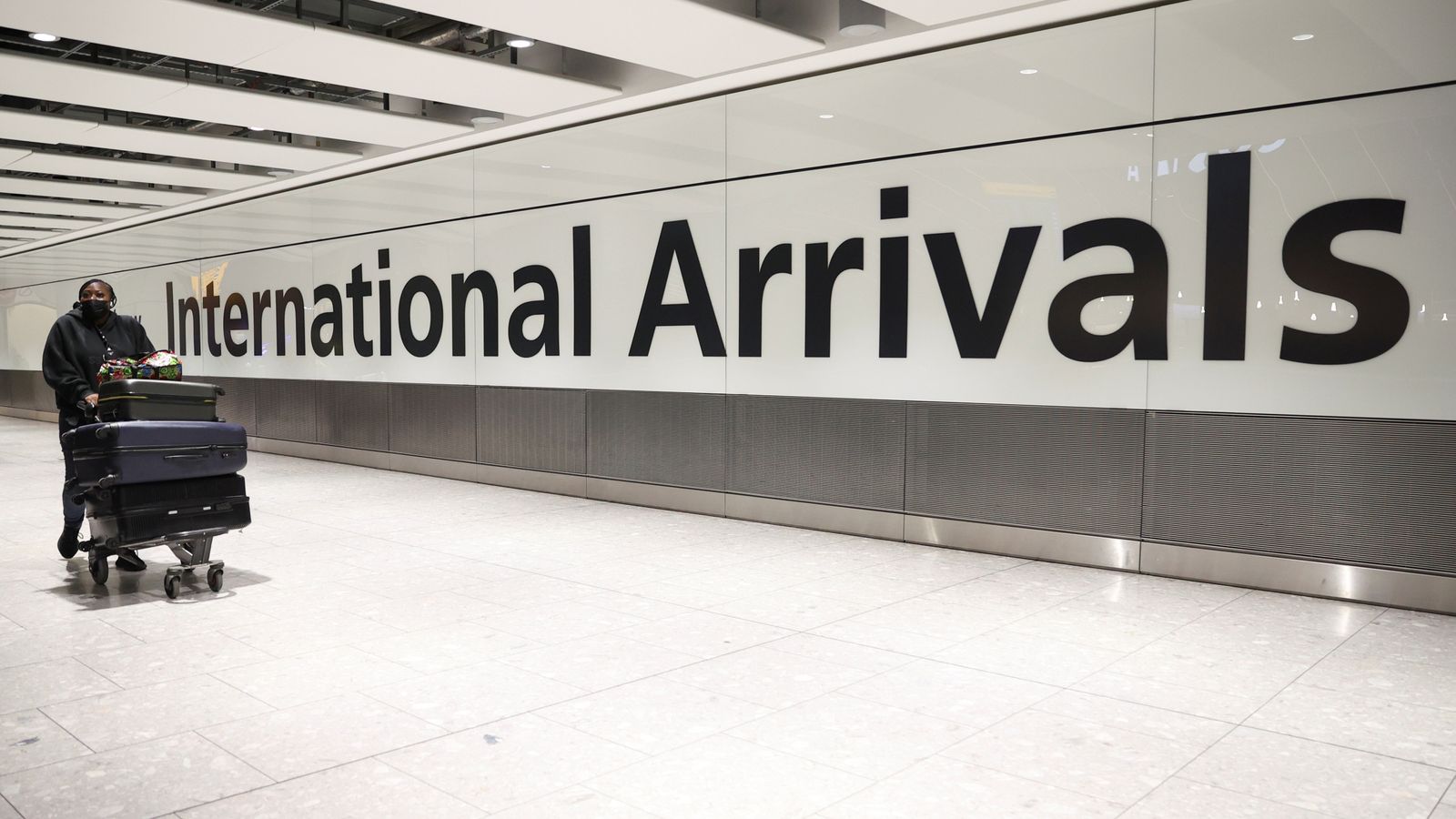Air passenger numbers plummeted by 98% at the height the pandemic last year, official figures show.
Monthly arrivals to the UK fell during the first coronavirus lockdown from 6.8 million in February to 112,300 in April 2020, data published by the Office for National Statistics (ONS) reveals.
The figures have been released as part of an analysis of how industries related to travel and tourism in the UK have been affected by the COVID-19 pandemic.
Statistics for EuroTunnel also showed a sharp drop in traffic during the first lockdown.
In April 2020, only 19,862 passenger vehicles travelled, compared with 227,393 in the same month in 2019, a fall of 91.3%.
After the partial relaxation of restrictions in both the UK and France, passenger traffic rose to a peak of 267,942 in August, a decline of 28.2% from the same month in 2019.
The ONS said In comparison with air passenger traffic, this was a proportionately stronger recovery, which was probably due to cars making up a large part of EuroTunnel’s business, enabling easier social distancing between passengers by remaining in their vehicles.
The data also reveals Greater London saw the largest fall in room occupancy of any English region from 2019 to 2020, with just 20% of rooms occupied in July last year compared with 90% in the same month in 2019.
Accommodation and travel agency businesses saw the sharpest decline in turnover during the first national lockdown, falling to 9.3% of their February levels in May 2020.
In the three months to June 2020, employment in accommodation for visitors fell by 21.5% compared with the same three months of 2019.
In travel and tourism industries overall, the number of people aged 16 to 24 years saw the largest fall in employment of any age group between July to September in 2019 and the same period in 2020.
As well as seeing bigger falls in employment compared to other sectors, travel and tourism industries have also tended to have higher rates of people on furlough leave.
The ONS said: “Even as restrictions eased over the summer of 2020, the percentage of the workforce on furlough leave in most travel and tourism industries was higher than in other industries, before increasing again in November in response to further lockdown measures.”
